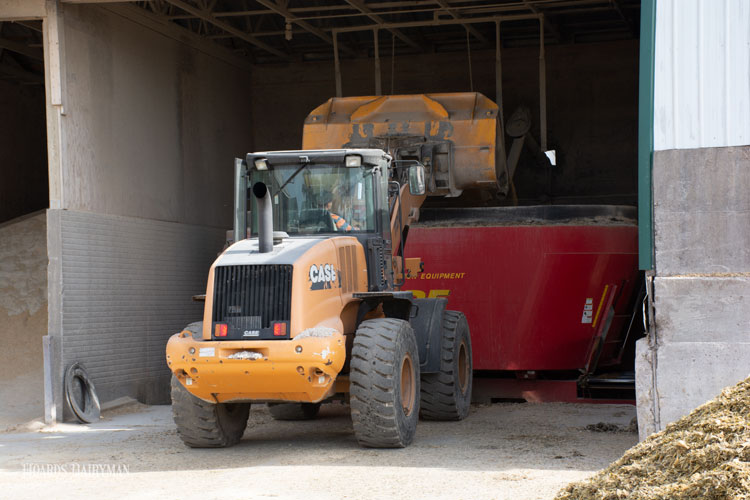
When it comes to the topic of on-farm premixes, most dairy owners and managers have strong feelings one way or the other. The proponents would focus on improved loading accuracy and the detractors would ask why you would want to load and mix ingredients twice. Both are solid points of view and perhaps each feeding area has its own best approach.
In general, I tend to be mostly positive on using premixes. Perhaps we have made dairy rations overly complicated by having a solution for every need by adding yet another ingredient to the commodity area. Some of these are to save money and others may be to enhance milk production. Premixing makes this over-indulgence in feeding perfection possible.
If the decision is to use premixes, “What are some of the key points to consider on how best to do it?”
Fewer partial buckets
The primary reason for including low-feed rate ingredients such as protein or fat supplements into a premix relates to fewer partial buckets each day. If an ingredient’s inclusion is low enough that every load requires a partial bucket, this raises the risk level of over or underfeeding with each load of total mixed ration (TMR). Not only does it take time to go back and dump the extra, the risk of feeding the incorrect amount occurs in every load.
If the pounds required of this ingredient resulted in approximately three quarters of a loader bucket on each of nine loads of mixed TMR, instead of carefully adding the exact amount nine times, the feeder can quickly dump six full buckets and only has to take time to closely watch the scale for the last few pounds once. In doing so, there is only one trip back to dump the extra in the bay and there is only one opportunity for a loading pounds error instead of nine.
That is my primary case for being a premix proponent.
What to include
The first inclination is to think of things like minerals, low feed-rate protein and fat supplements for a premix. This would be correct, but the option to include low-inclusion roughages like straw or grass hay may be an even greater uplift. An ingredient like straw may have a perfect feed rate of even less than 1 pound.
Since roughages are notorious for falling into the mixer in clumps, my experience is that these are often overfed when added directly to the final TMR load. If a full day’s use of straw can be loaded in five or six heaping buckets full of straw and one partial, the errors should be reduced compared to the feeder bumping the hydraulics to add the last 100 pounds when 250 pounds accidentally falls in.
An additional benefit of adding low-quality, low feed-rate roughages to premixes is how nicely they get processed. Most of these are too long for the final ration and tub grinding is a common solution. The problem with grinding is the amount of powder created. Not only is this a messy, dusty, and shrink-enhancing fire risk, this portion of straw in a powder form is neither helpful for adding roughage nor forage digestion to the diet.
One last thing on adding straw in premixes. At times, to make the ration model happy while adjusting to a new alfalfa or corn silage analysis, we modulate straw inclusion. The prescribed straw feed rate to get to the sweet spot on undigested neutral detergent fiber (uNDF) may go from three-quarters to nine-tenths of a pound. This highly concentrated form of uNDF makes this change meaningful in the model.
If you add that straw directly to each load of final TMR, the loading error variability will be greater than the change in feed rate. If, however, it is in a premix, you are likely to successfully add the small amount of increased fiber desired.
Storage matters
A couple of other decisions need to be made such as including liquids and if it is best to premix all the grains or leave higher-feed rate ingredients like corn grain out. One last point to be made is that this premix building needs to be done as perfectly as possible. I like to test these occasionally and remind the feeders and owners that the nutrient specs on this on-farm blend have the same standards as if we were buying it mixed from a feed company. It will include much of the key nutrients for production and health of the herd.
To answer the question, “Premix or not?” Perhaps give it a try and see if the cows approve.







